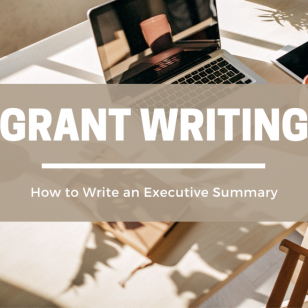By Kelsey Boudin
President and Founder, Southern Tier Communications Strategies, LLC
Should you write grants in the first or third person? Undoubtedly, if you’ve learned grant writing directly from a grant-writing mentor, his or her particular style or preference guided the teaching.
Some perceive grant proposals to be stiff and academic, emphasizing logic and proof of need. If so, you likely leaned toward the third-person perspective: “The GeorgeStrong Foundation seeks support …” and “It will provide winter clothes to individuals residing at the homeless shelter.” The third person appears more objective.
Some see grant proposals as a friendly conversation, crafting words to build relationships for the common good. The first person strikes a cordial and caring tone: “We aim to expand our capacity to better serve our clients …” or “Their training needs have grown since the region’s largest employer closed.” It shows that the organization writing the grant has a vested interest in success and community.
So which is right for grant writing? First person, third person, or how about even second person?
Writing Grants in the First or Third Person. Decisions, Decisions.
The correct answer is there is no correct answer. Let the specific funder be your guide as you research grantmakers likely to support your mission.
Here are some variables that may guide your choice. If you’re executing a strong grant writing strategy — producing a large volume of proposals to varied funders to improve your chances to win — you’ll undoubtedly encounter these scenarios.
Foundation vs. Government Grants
Generally, foundation grants and government grants couldn’t be more different when it comes to everything from the building the narrative to submitting supplementary budget documentation. A private foundation or charitable trust may have a more laid-back style, usually requiring less legwork and shorter grant narratives with leeway to paint a pretty (or ugly) picture of need and progress. A government grant at any level is generally a behemoth project with prescriptively detailed narratives reading like research papers, strict formatting and citing, and piles of supplementary documentation.
You can guess which appreciates the more informal first person and which prefers the stuffy third person.
Writing with Space Constraints
Almost all grant processes today have word or character limits. They may limit the narrative to 10 pages total, or individual sections to 1,000 words, 500 words, 1,000 characters, whatever. It’s impossible to get around these, as most grantmakers now accept grants only through online portals that digitally reject errant responses.
So first person or third person? Whichever one is less wordy. First-person pronouns end the monotony of continually repeating a lengthy proper noun. It’s much easier to condense the 39 characters (including spaces) of “Academy of Arts and Sciences Foundation” into the two characters of “we” and three of “our.” However, avoid the first-person pronoun “I” at all costs. The organization is a team of “we.” Grant reviewers prize teamwork and collaboration.
All writers must aim for brevity. Brevity brings clarity. But even the best grant professionals run afoul of that damn character count. You may even find yourself mixing first and third person to cut for space. But be mindful of subject-verb agreement when working with the singular “it” and “its” and the plural “they” and “their.”
Choosing First Person or Third Person in Grant Writing
Go with your instinct. It’s rarely wrong. The great storytelling required in grant writing is possible in either the first or third person.
If you need help crafting a powerful narrative for funding, feel free to contact me at ke****@************************es.com.







